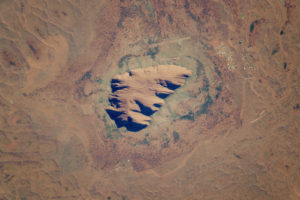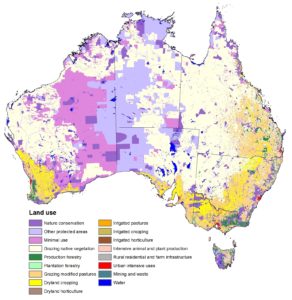
Australia has such potential to become a space player and the need for the country to develop its own space industry is becoming increasingly urgent. Alexander Linossier gives his very engaging view on this topic.
I grew up loving all things space; planets, stars, astronauts. I would lie in my backyard at night, dreaming of flying through the stars and building the rockets to get us there. This evolved into manned spaceflight vehicles, and then into anything that flew, eventually leading me to study a Bachelor of Aerospace / Bachelor of Arts in my hometown of Melbourne, Australia. Unfortunately for me, there was no space industry waiting for me at the other end. My classmates were left in a similar position; of my graduating class, you could count on one hand the number of us who had even managed to find an engineering job. Of those, only one was involved in the aeronautical industry, and none at all in space. I found myself working in Oil & Gas, following a dominant industry of Australia’s recent economy in natural resources. Eventually, dissatisfied with my career prospects, I turned to other countries to pursue my dream of working in the space industry.
My experience is not an uncommon one in Australia, the only OECD nation without a government space agency or space program. There are many Australians who have left home to work in space, taking their knowledge, skills, experience and economic contributions with them. Large international companies with offices around the world working on space projects are hesitant to enter Australia without a body to coordinate the industry; according to the recent White Paper by the Space Industry Association of Australia (SIAA), companies can’t even find a single point of contact to assist in planning and establishing operations in Australia. Instead of diversifying the nation’s industry, the government has focused on particular industries, namely natural resource extraction in recent history, to support the economy. While this has provided significant wealth, it has come at the expense of many other modern industries that are now also entering boom periods, such as space.

At the recent 11th IAA Symposium on Small Satellites for Earth Observation, I presented a paper on a satellite system designed to dramatically encourage the growth of the Australian space industry. The Symposium was an interesting mix of projects from government, academia and industry, and this highlights the evolving nature of space. In his keynote speech, Prof. Jan Woerner, Director General of the European Space Agency (ESA), spoke of the emerging “Space 4.0”. Space 1.0 was astronomy, beginning centuries ago and reaching into the modern era. Space 2.0 was the frenetic Space Race between USA and the former USSR that saw space technology develop at incredible rates due to huge spending on both sides of the Pacific. With the launch of the International Space Station, Space 3.0, the era of cooperation and exploitation, was ushered in. What defines Space 4.0, however, is the rise of commercial and private space. Companies, academic institutions, and even private citizens are now heavily intertwined with the space economy; commercial ventures offer solutions for systems as small as temperature sensors, and as large as GEO-capable launchers. Importantly, these services and products are not only being sold to government agencies, but rather other commercial or academic customers. Instead of acting solely as a producer and procurer of space goods, government agencies are increasingly finding themselves acting as coordinators, facilitators, and regulators.
While it may seem that Australia has missed the proverbial spaceship, our government’s previous hesitance may now provide the country with an extremely unique opportunity. There is no denying that the Australian economy could never and still cannot support a major space program like that of the USA, Russia or the EU – however this should not be seen as a disadvantage. Instead, Australia is a strong, international economy poised to take full advantage of Space 4.0, and do so without the ‘baggage’ of traditional Space 2.0 and 3.0. This baggage refers to the red-tape, the bureaucracy, the politics, and the inflexibility of traditional governmental space agencies. Australia currently operates as a nearly 100% import space industry, with researchers and companies making heavy use of space data to conduct their business. While there is currently no way to obtain such data domestically, there is no need for it to be this way in the future. An Australian space agency could operate from the system engineering and project management level, bringing together Australian designed and built products and systems to provide the required data products to Australian businesses and researchers. This would further encourage the development of a commercial space sector in Australia, on top of the typical encouragements provided by the government in the past, such as tax breaks or public-private partnership investments, to other fledgling industries. Heritage in space means everything; Australian companies could then export their flight-proven systems to the rest of the world. In addition, this significantly reduces the operating cost of the national agency, freeing up funds to expand system capabilities or allow for more projects, and maximise the government’s ‘bang-for-their-buck’. Why spend time and money designing custom sub-systems for every (domestic) mission, when instead you can promote Australian designed and built products to the international market?
As noted by Andrea Boyd, ISS Flight Controller for ESA, in a previous series of articles for SpaceWatch Middle East, Australia also has an outstanding offer from ESA to become a non-European cooperating member of ESA, in a similar capacity to Canada. Yet we’ve rejected the offer multiple times. Member status of ESA means contributing to much larger-scale projects than Australia could afford alone; in addition, all funds given to ESA are returned to Australia through contracts, employment, and purchases of services and products. The country can then capitalise on something we do extremely well; innovative and world-first research. Cutting-edge projects require cutting-edge technology, and Australia has plenty of experience in developing unique and extremely important systems. The Commonwealth Scientific and Industrial Research Organisation (CSIRO), our government research organisation, invented the ever-present (until you really need it) WiFi; our Defence research branches led directly to the development of over-the-horizon radar and the incredibly important black-box flight recorder. So then, with membership of ESA, an Australian space agency can support and drive innovation amongst Australian companies, whilst simultaneously pushing the boundaries of space technology research.

This is, obviously, a future vision of the industry, that may end up looking quite different. The critical question now is “How do we get there?”. The first step is the establishment of an Australian space agency to coordinate the industry growth efforts. Up next, the ESA offer is still outstanding – meaning Australia can, straight away, begin taking advantage of its benefits. And at only $20 million, it’s a cheap investment directly back into the country’s economy. Through the new space agency, the government can increase investment into space start-ups and businesses, attract international companies, and build the infrastructure required to support the space industry. This infrastructure is incredibly important, in particular for small companies who can’t afford to buy or build seldom used facilities such as test chambers. The recent opening of the Advanced Instrumentation and Technology Centre at the Mt. Stromlo Observatory near Canberra, Australia shows the government is willing to take steps in the right direction.
The mission concept I proposed at the recent Symposium focuses mainly on educating students as to the importance of space to the modern world. The Mission to Inspire a Space Technology and Education Revolution in Australia (MISTER Aussie) is a satellite system with high-resolution imagers providing at least a 2m ground pixel resolution, real-time pointing control of a video stream, and a naked-eye visible light source. Curriculum units written in line with both National and State curriculums will be taught to students in Primary and Secondary schools, culminating in an incursion activity where students will get to interact directly with MISTER Aussie from their own classrooms. Units will be offered both in the usual STEM areas and subjects that typically wouldn’t expose students to space, but are vital to any space industry; economics, politics, history, geography and law, to name a few. The goal is to drive up demand for space-related post-secondary study or training. To provide yet more encouragement to universities, they will be brought into the project as partners, operating the ground station network in UHF and S-band. As compensation for their services, the universities will receive extensive access to the satellite and its data products, as well as any available payload space for their own scientific instruments or technology demonstrations. This will also increase their appeal to foreign students; education being one of Australia’s largest service exports, worth billions of dollars each year.
In my personal experience, aerospace education in Australia, while of a high-standard, focuses mostly on aeronautical aspects, and only in recent years have Australian universities begun venturing into the realm of the stars. Although MISTER Aussie focuses on education, this is mostly to take advantage of the comfort the government has shown in spending on educational programs. It also has the ability to provide, at least in part, one thing that the government needs to really jump into space; demonstration of the value of and market for a domestic space capability. Through projects with Australian businesses, such as farmers, and research organisations, such as the CSIRO, MISTER Aussie can use its multi-spectral cameras to prove to the government that having data on demand, fully controlled by Australia, optimised for Australian use, is the way forward to guarantee access for citizens and Defence alike. The initial system would be, like recent “Australian” satellites, designed and built overseas, taking advantage of boot-strapping programs like the one the UAE used to quickly establish domestic space engineering experience. Future iterations would make full use of Australian engineers, products, facilities, and services as they became available.
The next steps for Australia, then, are clear:
- Establish an Australian space agency, as soon as possible
- Accept ESA’s offer of membership
- Increase funding for space innovators and infrastructure
- Use boot-strapping programs to rapidly increase Australian engineers’ space experience
- Design, manufacture and launch a space system targeted to Australia’s specific needs – most likely telecommunications or Earth observation
- Reap the benefits of increased employment, industry, economy and education
Also, when there’s one going, a job at home would be fantastic. I’m missing my Tim Tams and Parmas.
Alexander Linossier graduated from Monash University in 2013 with a Bachelor of Aerospace Engineering / Bachelor of Arts and then spent the next two years working as a Drilling Engineer supporting offshore oil and gas projects. His enduring fascination with space led him to quit his job and move to Berlin, Germany, where he is currently completing his Master of Space Engineering at the Technische Universität Berlin. He hopes to return home to help develop the Australian space industry, and one day experience space flight for himself. He can be reached directly at: [email protected]
SpaceWatch Middle East thanks Alexander Linossier for his view.
Original published at: https://spacewatch.global/2017/05/spacewatchme-oped-australia/
 SpaceWatch.Global An independent perspective on space
SpaceWatch.Global An independent perspective on space

